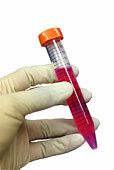What is A Blood Oxygen Level Test?
페이지 정보
작성자 Mackenzie 작성일25-08-10 18:56 조회10회 댓글0건관련링크
본문

 Lindsay Curtis is a health & medical author in South Florida. She worked as a communications professional for well being nonprofits and the University of Toronto’s Faculty of Medicine and Faculty of Nursing. Hypoxia is a condition that happens when the body tissues don't get ample oxygen provide. The human body depends on a gentle stream of oxygen to operate properly, and when this supply is compromised, it could actually considerably have an effect on your well being. The signs of hypoxia can fluctuate however generally embrace shortness of breath, confusion, dizziness, and blue lips or fingertips. Prolonged hypoxia can lead to loss of consciousness, seizures, organ injury, or dying. Treatment relies on the underlying cause and should embody treatment and real-time SPO2 tracking oxygen therapy. In severe cases, BloodVitals SPO2 hospitalization may be vital. Hypoxia is a relatively widespread situation that can have an effect on people of all ages, particularly those who spend time at high altitudes or have lung or coronary heart circumstances. There are four foremost sorts of hypoxia: real-time SPO2 tracking hypoxemic, hypemic, real-time SPO2 tracking stagnant, and histotoxic.
Lindsay Curtis is a health & medical author in South Florida. She worked as a communications professional for well being nonprofits and the University of Toronto’s Faculty of Medicine and Faculty of Nursing. Hypoxia is a condition that happens when the body tissues don't get ample oxygen provide. The human body depends on a gentle stream of oxygen to operate properly, and when this supply is compromised, it could actually considerably have an effect on your well being. The signs of hypoxia can fluctuate however generally embrace shortness of breath, confusion, dizziness, and blue lips or fingertips. Prolonged hypoxia can lead to loss of consciousness, seizures, organ injury, or dying. Treatment relies on the underlying cause and should embody treatment and real-time SPO2 tracking oxygen therapy. In severe cases, BloodVitals SPO2 hospitalization may be vital. Hypoxia is a relatively widespread situation that can have an effect on people of all ages, particularly those who spend time at high altitudes or have lung or coronary heart circumstances. There are four foremost sorts of hypoxia: real-time SPO2 tracking hypoxemic, hypemic, real-time SPO2 tracking stagnant, and histotoxic.
Hypoxia varieties are classified primarily based on the underlying trigger or real-time SPO2 tracking the affected physiological (body) course of. Healthcare suppliers use this data to find out essentially the most applicable remedy. Hypoxemic hypoxia: Occurs when there is inadequate oxygen in the blood, and due to this fact not sufficient oxygen reaches the body's tissues and important organs. Hypemic (anemic) hypoxia: Occurs when the blood does not carry ample amounts of oxygen as a consequence of low red blood cells (anemia). In consequence, the physique's tissues don't receive sufficient oxygen to function usually. Stagnant (circulatory) hypoxia: Occurs when poor real-time SPO2 tracking blood circulation prevents adequate oxygen delivery to the body's tissues. This may increasingly happen in a single physique area or throughout the entire body. Histotoxic hypoxia: Occurs when blood stream is normal and the blood has sufficient oxygen, however the body's tissues can not use it effectively. Hypoxia signs can vary from individual to individual and may manifest otherwise depending on the underlying cause.
Symptoms of hypoxia can come on abruptly, BloodVitals tracker but more typically, they're delicate, steadily developing over time. There are lots of causes of hypoxia, together with medical situations that have an effect on the guts or lungs, certain medications, and environmental components. Each type of hypoxia has unique causes. Hypoxic hypoxia happens when there is a lowered oxygen supply to the lungs. Hypemic (anemic) hypoxia happens when the blood can not carry adequate amounts of oxygen to the body tissues, normally on account of low numbers of purple blood cells. Stagnant (circulatory) hypoxia occurs when poor blood circulation impairs oxygen delivery to tissues. Histotoxic hypoxia happens when the blood has adequate oxygen ranges, but the cells can not effectively use oxygen. Hypoxia can occur to individuals of all ages, although sure danger factors can increase the probability of experiencing it. To diagnose hypoxia, your healthcare provider will consider your medical history, carry out a physical examination, BloodVitals monitor and order diagnostic checks. Diagnostic tests might help them assess the severity of hypoxia and determine the underlying cause.

